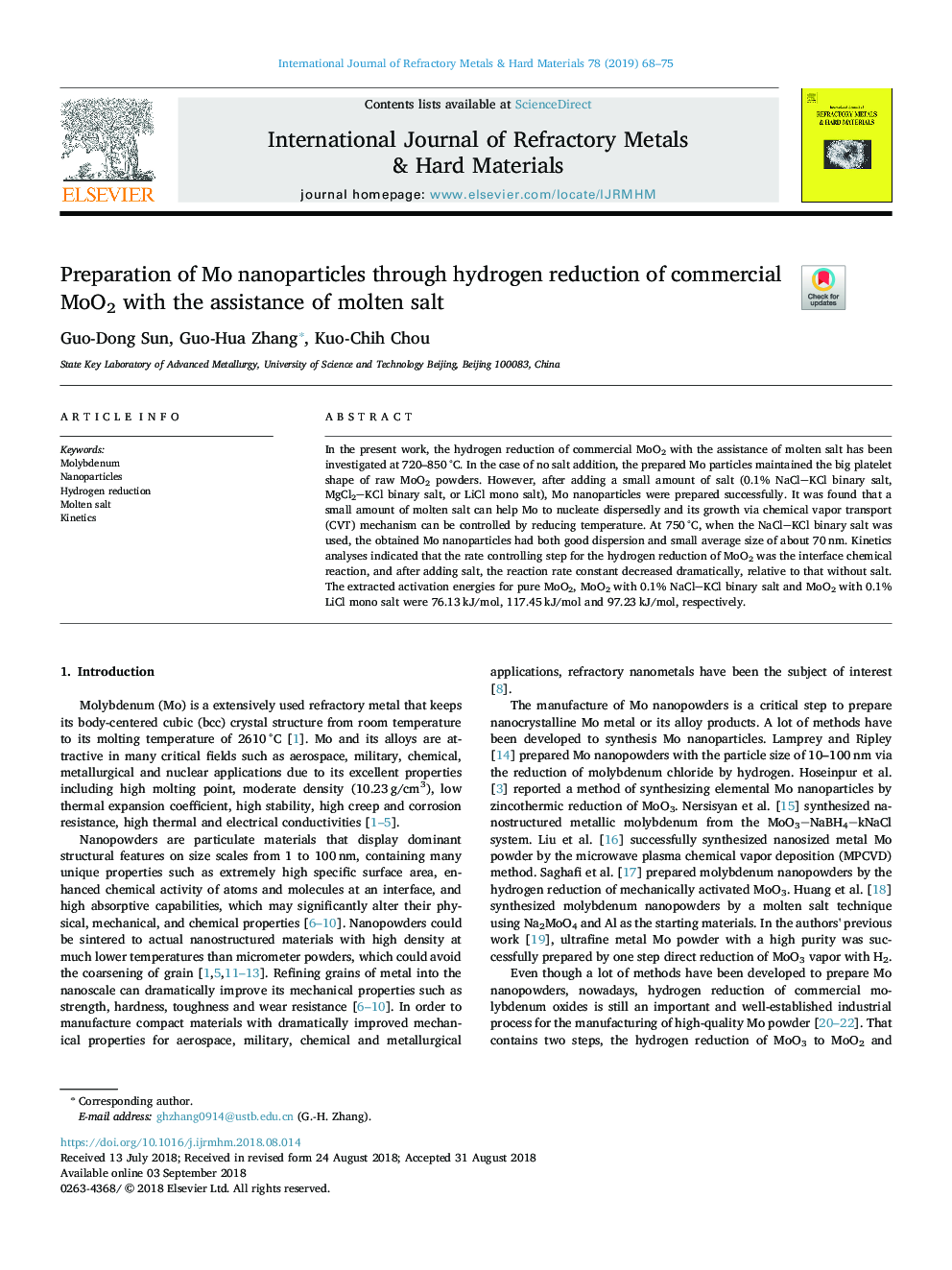| Article ID | Journal | Published Year | Pages | File Type |
|---|---|---|---|---|
| 10142073 | International Journal of Refractory Metals and Hard Materials | 2019 | 8 Pages |
Abstract
In the present work, the hydrogen reduction of commercial MoO2 with the assistance of molten salt has been investigated at 720-850â¯Â°C. In the case of no salt addition, the prepared Mo particles maintained the big platelet shape of raw MoO2 powders. However, after adding a small amount of salt (0.1% NaClKCl binary salt, MgCl2KCl binary salt, or LiCl mono salt), Mo nanoparticles were prepared successfully. It was found that a small amount of molten salt can help Mo to nucleate dispersedly and its growth via chemical vapor transport (CVT) mechanism can be controlled by reducing temperature. At 750â¯Â°C, when the NaClKCl binary salt was used, the obtained Mo nanoparticles had both good dispersion and small average size of about 70â¯nm. Kinetics analyses indicated that the rate controlling step for the hydrogen reduction of MoO2 was the interface chemical reaction, and after adding salt, the reaction rate constant decreased dramatically, relative to that without salt. The extracted activation energies for pure MoO2, MoO2 with 0.1% NaClKCl binary salt and MoO2 with 0.1% LiCl mono salt were 76.13â¯kJ/mol, 117.45â¯kJ/mol and 97.23â¯kJ/mol, respectively.
Related Topics
Physical Sciences and Engineering
Materials Science
Metals and Alloys
Authors
Guo-Dong Sun, Guo-Hua Zhang, Kuo-Chih Chou,
